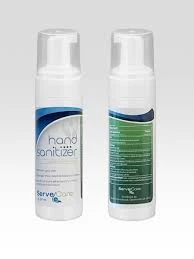Exploring the Applications and Benefits of Isothiazolinone in Various Industries
Understanding Isothiazolinones Uses and Applications
Isothiazolinones are a class of heterocyclic compounds characterized by a five-membered ring containing both sulfur and nitrogen atoms. They are widely recognized for their potent antimicrobial properties, making them popular choices in various industrial and consumer products. The primary isothiazolinones include methylisothiazolinone (MIT) and chloromethylisothiazolinone (CMIT), which are often used as preservatives due to their effectiveness against bacteria, fungi, and algae.
1. Preservation in Personal Care Products
One of the most prominent uses of isothiazolinones is in personal care products, such as shampoos, lotions, and cosmetics. Their ability to inhibit microbial growth ensures that these products remain safe for use over time. This is crucial in preventing contamination that can lead to skin irritations or infections. However, it is important to note that the use of isothiazolinones in personal care products has come under scrutiny in recent years due to reports of allergic reactions in some individuals. Consequently, regulatory agencies in various countries have started reviewing their permitted concentrations in cosmetic formulations.
2. Application in Household Cleaning Products
Isothiazolinones serve as effective preservatives in household cleaning agents. Their antimicrobial properties help enhance the shelf life of products such as surface cleaners, detergents, and disinfectants. By preventing bacterial and fungal growth, isothiazolinones ensure that these cleaning products remain effective during their intended use. Given the increased focus on hygiene and cleanliness, particularly in light of the recent global pandemic, the demand for effective preservatives has surged, further solidifying the role of isothiazolinones in this sector.
In industrial settings, isothiazolinones are employed in various formulations, including paints, coatings, and adhesives. They help in preventing mold and mildew growth that can compromise product integrity and performance. Additionally, they are used in the paper and pulp industry to control microbial growth during production processes. Their effectiveness in these areas highlights their versatility and capacity to enhance the longevity and effectiveness of industrial products.
isothiazolinone uses

4. Agriculture and Aquaculture
Isothiazolinones are also gaining traction in agriculture, particularly as biocides and fungicides. Their ability to control undesirable microorganisms makes them valuable in crop protection products. By preventing the growth of pathogens, farmers can improve crop yield and quality. Furthermore, in aquaculture, isothiazolinones are utilized to maintain water quality by controlling algae and bacteria in fish farming environments. This is essential for promoting healthy fish populations and ensuring sustainable practices within the industry.
5. Concerns and Safety Measures
Despite their widespread use, isothiazolinones have raised safety concerns, primarily due to allergic reactions that some individuals may experience, especially following prolonged exposure. Regulatory agencies have recommended limits on their concentrations in consumer products, and manufacturers are encouraged to explore alternative preservatives. This shift is in part due to the growing public awareness of ingredient safety and the demand for hypoallergenic and natural products.
6. Future Directions
The future of isothiazolinones in various industries will likely involve balancing efficacy with safety. Research is ongoing to develop modified isothiazolinone compounds that retain their antimicrobial properties while minimizing potential allergenic effects. Additionally, the exploration of alternative preservatives that can match or exceed the performance of isothiazolinones while being safer for consumers and the environment is becoming a priority.
Conclusion
Isothiazolinones play a critical role in preserving the efficacy and safety of a vast array of products ranging from personal care items to industrial applications. However, as awareness of potential health risks grows, the industry must adapt by investigating safer alternatives and modifying existing formulations. Understanding the balance between functionality and safety will be key to the continued use of isothiazolinones in various sectors while addressing consumer concerns about health and environmental impacts.
-
lk-319-special-scale-and-corrosion-inhibitor-for-steel-plants-advanced-solutions-for-industrial-water-systemsNewsAug.22,2025
-
flocculant-water-treatment-essential-chemical-solutions-for-purification-processesNewsAug.22,2025
-
isothiazolinones-versatile-microbial-control-agents-for-industrial-and-consumer-applicationsNewsAug.22,2025
-
scale-inhibitor-key-solutions-for-water-system-scale-preventionNewsAug.22,2025
-
organophosphonates-versatile-scale-inhibitors-for-industrial-water-systemsNewsAug.22,2025
-
scale-and-corrosion-inhibitor-essential-chemical-solutions-for-water-system-maintenanceNewsAug.22,2025





